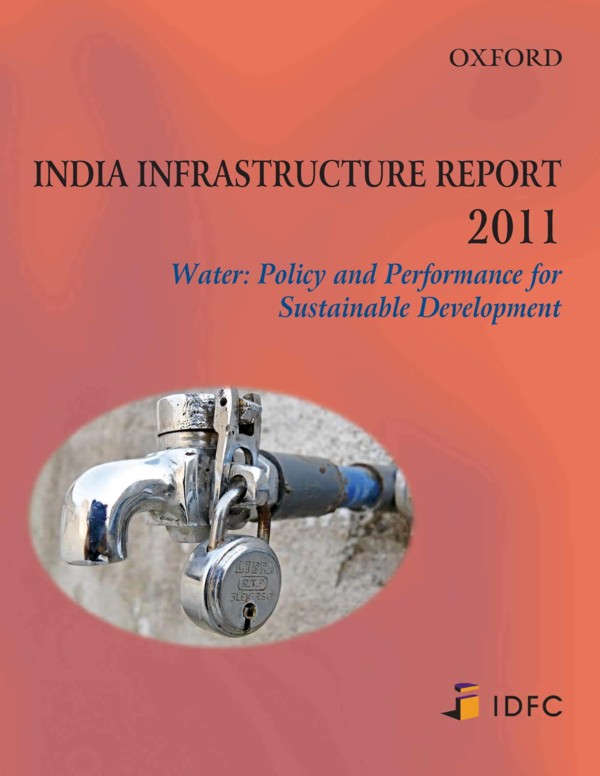Tushaar Shah
Pumping groundwater to harnessing rainfall: A tale of two states
Posted on 01 Jul, 2020 12:04 PMGroundwater depletion, a growing challenge for India

Solar irrigation pumps: A boon and bane
Posted on 03 Jul, 2015 09:26 PMSolar energy, which was until now only considered for small scale lighting is now slowly gaining tremendous popularity among farmers to pump irrigation water. The paper titled 'Karnataka’s smart, new solar pump policy for irrigation' published in the

Causes of agrarian stagnation: A tale of two regions
Posted on 25 Apr, 2015 06:25 PMVidarbha region in Maharashtra has continued to be in the news over the years because of its severe agrarian crisis with reports of severe droughts, loss of crops and increasing farmer suicides. Relief packages have done very little to solve these problems.

Continuity and change in ancient small-tank irrigation in Sri Lanka: A paper in Economic and Political Weekly
Posted on 21 Mar, 2013 11:28 AMSri Lanka is home to one of the three most famous ancient irrigation civilizations in Asia. The effective functioning of this irrigation system depended on the then social organization as much as on technical accuracy. This paper, first published in the Economic and Political Weekly, explores the changes that are taking place in this social system today and the impact of these changes on the irrigation system.
How do groundwater irrigation and energy supply influence each other ? - Talks from the IWMI-Tata Annual Partners' Meet held at Anand in November 2012
Posted on 10 Mar, 2013 01:03 PMIndia is the world's largest consumer of groundwater where it is extensively used for irrigation. However, there is a considerable waste of this valuable resource. While a part of this waste can be attributed to a lack of incentive for conservation, unmetered electricity supply contributes greatly to this problem. This has led to the formation of what is being termed an energy-irrigation nexus.
Several sessions at the IWMI-Tata Annual Partners' Meet in 2012 discussed this phenomenon, its causes, impact and possible management strategies.
Remembering Verghese Kurien- an article by Tushaar Shah in Economic and Political Weekly
Posted on 24 Sep, 2012 06:25 PMIndia's dairy cooperatives today present a rare success story. This story is best represented by Amul which is today one of India's most trusted and loved brands, and also one of its most valuable, comprising a Rs.12,000 crore farmer-owned business.
Water: Policy and performance for sustainable development - India Infrastructure Report 2011
Posted on 20 Jan, 2012 04:55 PMThe India Infrastructure Report (2011) brought out by the Infrastructure Development Finance Company focuses on 'water' and seeks to 'evolve an appropriate policy framework from the perspective of rights, entitlements, and conflict resolution mechanisms'. The report aims to answer the following questions:
- How clear is the strategic vision for water resource management and sustainable development?
- How effective and equitable is the legal framework?
- Given that only the supply-side approach will not help in meeting future demand, what legal, regulatory, institutional, and pricing mechanisms will be necessary to efficiently manage and restrain demand?

Accelerated programmes - What can the water sector learn from the power sector? – An article in EPW by Tushaar Shah
Posted on 16 Jun, 2011 09:11 PMThe Government of India’s 15-year old AIBP has come under much-deserved criticism for all-round non-performance. It was introduced to support states in "last mile" public irrigation projects, that is, projects which are nearly completed but whose full benefits can start flowing only after small, incremental investments are made. Yet, the AIBP has been used mostly for funding new projects.
Is irrigation water free? A reality check in the Indo-Gangetic Basin – A working paper by the Challenge Program on Water and Food
Posted on 17 Aug, 2010 09:41 PMThe paper generated under the Challenge Program for Water and Food (CPWF) project explores in some depth a totally different dynamic in the irrigation economy of the vast Indo-Gangetic basin (IGB), an important exception to the global characterization. The global debate on ‘‘water as an economic good’’ presumes that irrigation water supply is delivered, controlled, and priced by public institutions. In the developing world, the price of water is kept so low that water use cost leaves farmers no incentive to use it efficiently.